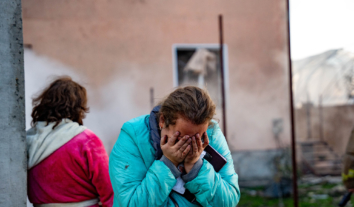Amnesty International: The Fight against Torture Produces Results
In countries where at the request of human rights defenders were introduced preventative measures, the number of cases of torture decreased.
Today, on the International Day in Support of Victims of Torture (and during the accompanying week-long observance) rallies are being held all over the world aiming to draw attention to this issue. In Athens, for example, activists and ordinary citizens have organized visits to place where torture took place in their country, especially during the seven year junta in the late 60s-70s. There is also a relay run scheduled in Burkina Faso where participants are expressing solidarity with victims of torture throughout the world.
As reported by the official website of Amnesty International, the human rights organization launched the Stop Torture campaign on 13 May 2014 in order to expose a global crisis on torture. The campaign wants greater protection from torture through a wide range of measures – such as independent checks on detention centers, prompt access to lawyers and courts, and independent investigations into torture allegations – until torture is completely stamped out.
While many countries made significant strides in combating torture, governments around the world are still using torture to extract information, force confessions, silence dissent or simply as a cruel form of punishment. 157 have ratified have ratified the United Nations Convention against Torture, but 141 of them have been the subject of Amnesty reports on torture or other ill-treatment in the past five years. In some countries it’s a rarity, in others it’s widespread. Even one case is unacceptable.
Since the beginning of the campaign, it has issued reports on torture in five countries: Mexico, Morocco, Nigeria, the Philippines and Uzbekistan. The reports show that torture is a frequent event in these countries, while the perpetrators of torture continue to enjoy impunity for their crimes.
There were 1,505 reported complaints of torture and other ill-treatment in Mexico in 2013, 600% more than in 2003. In Nigeria, 50% of people in would not feel safe from torture if they were held in custody. Turning to the Philippines, 21 out of 55 interviewed survivors of torture face torture during their childhoods. Meanwhile, there are 13 pending requests UN human rights experts to visit Uzbekistan to assess the human rights situation in the country since 2002.
The most common tools of torture are basic and brutal – the hand, the boot and the truncheon – anything that can cause wounds or break bones. Other methods are also used from the flooding of victim’s nostrils with carbonated water in Mexico to suspending their bodies in awkward positions.
It is possible to stop torture. Countries that put safeguards in place can see considerable drops in cases and complaints. Amnesty International’s Stop Torture campaign has seen many tangible steps taken that will protect human rights. For example, in October 2014, Mexico released Honduran torture victim and prisoner of conscience, Ángel Amilcar Colón without charge after more than five years of pre–trial detention. 20,000 people signed petitions as part of an Amnesty International campaign calling for his release. In December 2014, Nigerian police published a Human Rights Practice Manual setting out standards expected of police officers. Amnesty International has campaigned since 2008 for the police to produce detailed guidelines on respecting human rights for officers.








